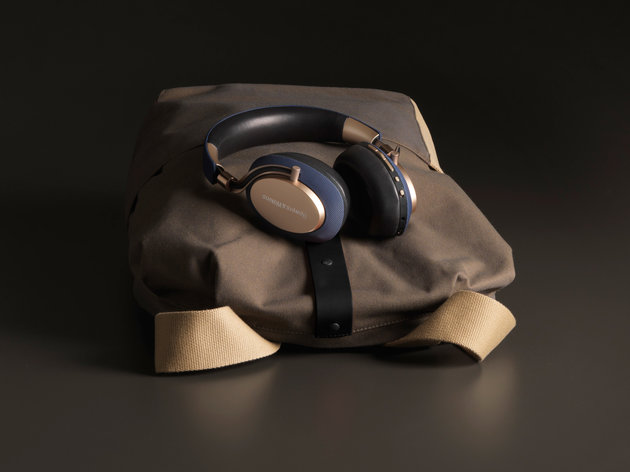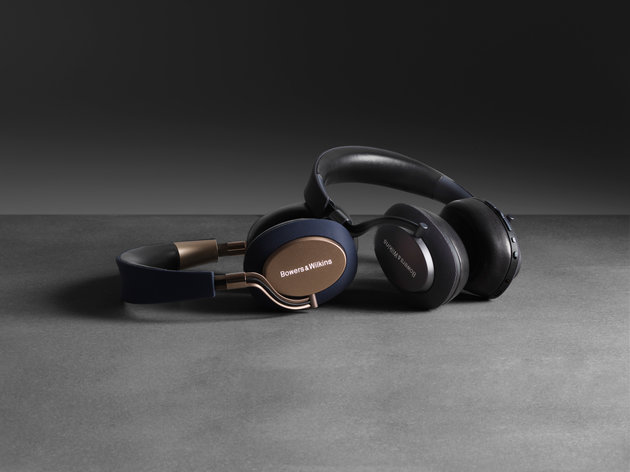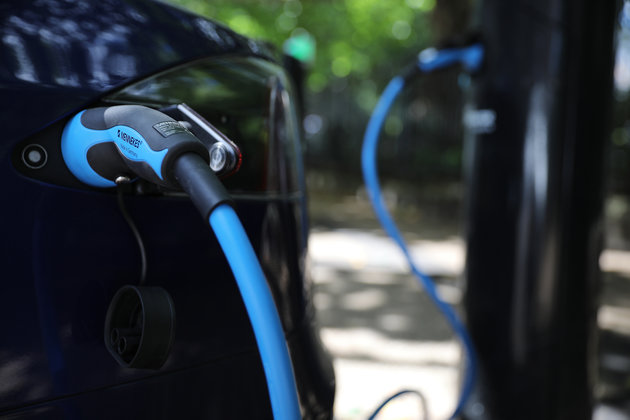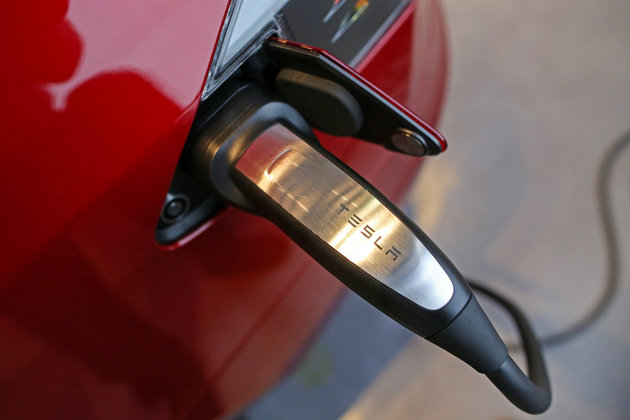[unable to retrieve full-text content]


[unable to retrieve full-text content]

[unable to retrieve full-text content]

[unable to retrieve full-text content]

[unable to retrieve full-text content]

[unable to retrieve full-text content]

[unable to retrieve full-text content]

It’s incredible to think that the PX are Bowers & Wilkins’ first ever pair of noise-cancelling headphones. It is not by any stretch a new technology, and to enter a market so late in the game you would assume that B&W are already on the back foot.
You would be wrong however. The company’s reluctance to use noise-cancelling has always because of the trade-offs that come with sound quality.
Indeed when we asked a spokesperson for the company it was clear that noise-cancelling was something they actually wanted to actively avoid for a long time, so why now?
Well quite simply, they believe they can now release a pair of headphones that cancel noise to a high-standard while still maintaining the incredible sound quality that defines B&W’s entire portfolio.

BW
To give you some idea of how important that reputation is, B&W’s most expensive headphones the P9s aren’t even wireless, let alone noise-cancelling.
So how do the PX’s stand up to B&W’s almost ludicrous standards, and then also the competition.
Well from a design perspective the PX’s are perhaps the most edgy pair of headphones B&W have ever made. Gone is the all-leather design, instead this is a merging of leather, high-quality fabrics and curved metal.

BW
The result is something that looks still distinctly B&W but with more of a modern twist. They’re also quite large and in our view a little heavy so don’t expect them to blend into the background on the bus or train.
The metal frame and stiff leather ear cups also have another unfortunate side-effect which is that like so many other expensive headphones they have a tendency to push down on the top of your head resulting in a soreness that would kick in after the hour/two hour-long mark.
The PX’s certainly aren’t the only headphones to do this, both the recent Beats headphones suffer from it as do many others but it’s something to absolutely consider if you’re planning to take them on a long-haul flight though.
B&W have sensibly opted for clickable controls here rather than anything touch-sensitive and the headphones charge via USB-C. This last bit deserves a special mention because not only does it allow for faster charging but it also means that if your laptop has a USB-C port you can actually play high-quality audio direct to the headphones from the laptop.

BW
Enough about the design though, the key question here is how do they sound? Well they sound like a pair of high-quality Bowers & Wilkins headphones, which in and of itself should give you some sense of the achievement here.
While the noise-cancelling was good (not excellent), the fact they’ve managed to achieve that and maintain this quality of sound is nothing short of remarkable.
Being able to put the headphones on, block off the outside world and then listen to every minute detail on Ólafur Arnalds’ Eulogy For Evolution 2017 was goosebump-inducing.
We don’t want to say that it’s crisp because that suggests there’s a sharpness to the sound, which there isn’t. Instead it’s more a wide, open soundstage that can pick out even the tiniest details and give them the same breadth of volume that you would want from a thunderous bass.

BW
Now in addition to the sound quality, B&W have opted to pair the PX with an app that allows you to update the headphones and gives you some limited control over the ‘smart’ features that come with them.
Now we use the term ‘smart’ loosely because sadly this was the weakest part of the experience. The app allows you to select a number of different noise-cancelling environments such as an office or a plane but all they really seem to do is just determine how severe the noise-cancelling is.
In addition there are sensors in the headphones that can detect when you’ve taken them off, or have lifted a single ear cup. The headphones will pause the music while one side is raised, and then un-pause it when you place them back on your ears.
It’s a useful idea in theory but in our experience it was a bit hit and miss. Sometimes it would work, sometimes it wouldn’t, and sometimes it would just randomly pause the music without us doing anything. It’s not a deal-breaker and it can almost certainly be improved upon with further updates.
The PX’s reportedly have a 22-hour battery life with noise-cancelling enabled. We’ll be completely honest we didn’t get that, with the battery finally packing in at what must have been at least the 15/18-hour mark. That’s still over a days listening.
Are these the best noice-cancelling headphones we’ve ever used? Honestly, no they’re not. Are they the best-sounding noise-cancelling headphones we’ve ever used? Absolutely.
The PX’s don’t once compromise on sound-quality, so in that respect B&W have remained true to their ideals. As a pair of ‘smart’ headphones there’s definitely room for improvement too, but the addition of a USB-C port shows that the company is already planning for the future.
At £329 the PX’s are absolutely at the high-end of headphones which means they go up against the likes of the QC35′s and the PXC 500s. While they might not be able to compete in terms of raw noise-cancelling ability these are by far the best-sounding headphones with noise-cancelling. If sound quality is everything to you, then look no further.
They’re not what you would call effortlessly portable, certainly not as much as say the Beats Studio3′s or the QC35s. This combined with the soreness they cause after long bouts of listening suggest to us that if you’re a long-distance traveller, we would probably recommend you look at the rivals we mentioned above.
The Bowers & Wilkins PX headphones are available now for £329.

A set of fossilised teeth dating back a staggering 9.7 million years could rewrite the famous ‘out-of-Africa’ theory that suggests humanity moved from Africa to Europe after a major change in the climate.
Discovered by archeologists in a former bed of the river Rhine, the discovery is so significant that the local town’s mayor has claimed that “we shall have to start rewriting the history of mankind after today.”

Mainz Natural History Museum
The teeth themselves seem to share some striking similarities with the teeth of Lucy a 3.2 million year old skeleton discovered in Ethiopia.
Writing in Researchgate, Dr Herbert Lutz writes: “Both teeth, the crowns of an upper left canine and an upper right first molar, are exceptionally well preserved and obviously come from the same body of unknown sex.”
“While the molar shares characters with various other taxa,” explains Dr Lutz. “The canine reveals intriguingly potential hominin affinities: its lingual outline is clearly diamond-shaped.”
Herein lies the problem which is that while they match those of Lucy, they don’t match with any known species in Europe at the time.

GULSHAN KHAN via Getty Images
Professor Lee Rogers Berger holds a replica of the skull of ‘NEO’ a new skeleton fossil findings of the Homo Naledi Hominin species at the cradle of Human Kind in Maropeng near Johannesburg.
Until now there have been no truly concrete examples of hominins – a species closely related to humans – existing in the European continent around this time.
If they do turn out to belong to a hominin it would throw into question the currently held theory that early humans first evolved in the African continent and started moving north around 200,000/400,000 years ago.
It wouldn’t be until 60,000/70,000 years ago that they would start spreading around the world on a mass scale.
Of course if these teeth turn out to be from a human-related species this would drastically alter the theories that we currently have.
The significance of this is so great that the archaeologists actually waited a year before finally publishing their paper.
While the paper is now finally out in the public domain, Dr Lutz says that the work has just begun as further research will need to be carried out to finally prove the theory.

The government has announced a brand-new bill that could actually force petrol and service stations by law to install charging stations for electric and hybrid vehicles.
There are currently only 4,500 charging stations around the UK, the bill would enable this number to increase drastically along with the implementation of roadside charging points in areas where charging at your home is impossible.

Dan Kitwood via Getty Images
Transport Minister John Haynes said: “This bill will aid the construction of greater infrastructure to support the growing demand for automated and electric vehicles as we embrace this technology and move into the future.”
The bill goes on to state that every new charging point that’s installed will need to be a ‘smart charger’ meaning that it will know the demand that’s being placed on the national grid and adjust in order to maintain equal demand across the country.
A German company Ubitricity has already started rolling out a trial program in London that can actually convert street lamps into charging stations.

ullstein bild via Getty Images
While the bill certainly sounds promising, Steve Gooding, Director of the RAC Foundation believes that “The test, though, will be how effectively those powers are exercised.”
The bill’s arrival comes just months after the government finally confirmed that it would be banning the sale of petrol and diesel vehicles by 2040.
While the date set is further away than most other countries, a recent report by Dutch bank ING predicted that by 2035 almost all vehicles sold in Europe will be electric anyway.
In addition to government support, the car industry has already started making commitments to move all its cars over to either electric or hybrid engines.
Volvo confirmed that all its cars would have an electric motor by 2019 while the Volkswagen Group also announced that it would move all 300 of its models over to an electric powertrain by 2030.
So while it’s clear that car companies are happy to set ambitious targets, the pressure will not be on the government to make sure that the infrastructure will be ready, potentially even before the 2040 deadline.
The need for a large charging network isn’t just to accomadate the increased number of electric vehicles on the road, it will also be needed because at present electric cars just can’t compete with their combustable counterparts in terms of range.

Bloomberg via Getty Images
While car companies like Tesla are offering frankly practical driving ranges (at a premium), the average electric car currently available has a range of around 150+ miles at most.
To help alleviate the concerns around charging times as well, companies like Toyota have said that it is working on a brand-new battery technology that is safer, cheaper and can be charged in just minutes.
Currently a Tesla can be charged to around 80% in just 30mins using the company’s ultra-fast charging solution the Supercharger.
Finally the bill also requires that all owners of self-driving cars will need to be insured and it promises that a system will be put in place that in the event of an accident there will be quick and easy access to compensation.

[unable to retrieve full-text content]
